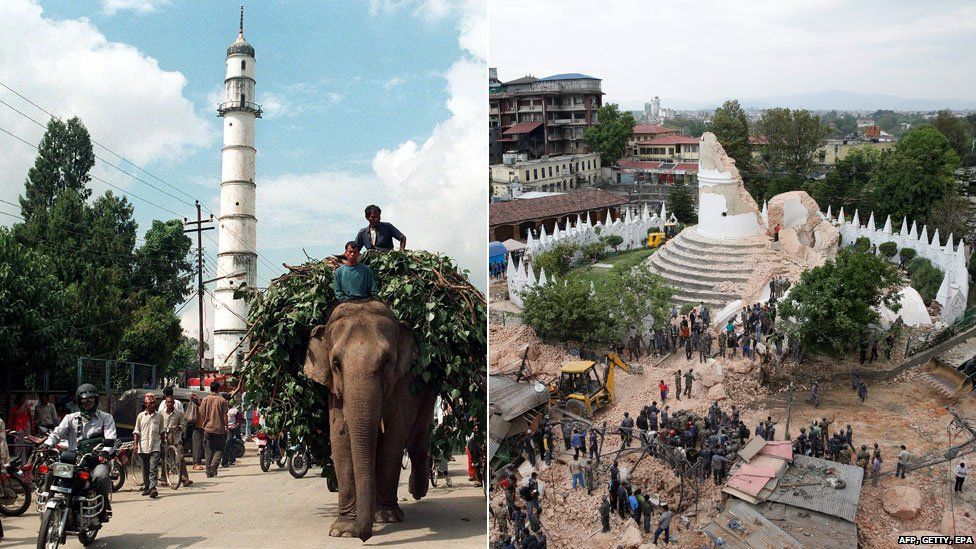|
Thousands of people have lost their lives and thousands more have been injured in a 7.8-magnitude earthquake that hit Nepal's capital Kathmandu and its surrounding areas. Mount Everest was also struck by deadly avalanches after the quake on Saturday.
Officials have warned that the number of casualties could rise as rescue teams reach remote mountainous areas of western Nepal. Many of the country's historic sites have been severely damaged, including temples and monuments. At least four out of seven Unesco World Heritage sites in the Kathmandu valley - three of them ancient city squares - were badly affected. KathmanduThe capital's Durbar Square - the royal Nepalese residence until the 19th century - has also suffered, with many buildings reduced to rubble. Durbar Square, Kathmandu: 13 February 2013 Durbar Square, Kathmandu: 27 April 2015 Durbar Square, Kathmandu: February 2015 Durbar Square, Kathmandu: 27 April 2015 Also in the capital, the 60m (200ft) nine-storey Dharahara tower, built in 1832, collapsed. Dharahara tower via satellite before and after the quake Temporary shelters have been set up on open spaces in the city - such as fields and stadiums. They offer some protection to families who have lost their homes or those too scared to stay inside after the quake and powerful aftershocks. Kathmandu stadium via satellite before and after the quake BhaktapurIn Bhaktapur, which had been the country's best preserved old city, initial reports claim half of all buildings have been destroyed and 80% of temples damaged. The ancient city, one of the worst-affected areas, lies to the east of the capital. Durbar Square, Bhaktapur: October 2014 Durbar Square, Bhaktapur: 27 April 2015 Durbar Square, Bhaktapur: February 2015 Durbar Square, Bhaktapur: April 2015 Search and rescue operationInternational teams of rescuers and medical experts are arriving in Nepal to help hunt and care for earthquake survivors. INTERACTIVE
The United Nations, which estimates 6.6 million people live in the districts affected by the earthquake, is helping to co-ordinate rescue efforts. Many have been left homeless by the disaster and the country is already reported to be running out of water and food. There are also frequent power cuts. The British organisation, Search and Rescue Assistance in Disasters (SARAID) has sent a team of experts with 1.5 tonnes of specialist equipment. This includes an electrical power generator and power tools for cutting through concrete and steel. They also have their own tents and food supplies, so they will not be a drain on local resources. India and China are among the other countries to send teams of rescuers. |
JUSTCLICK & CONNECT
|


